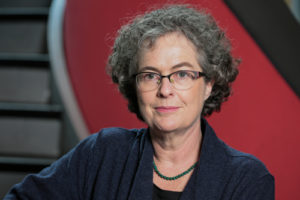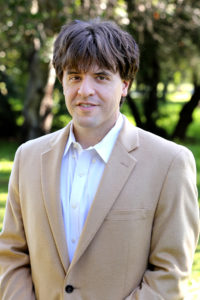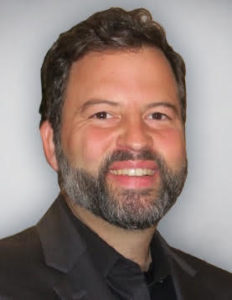2017
2017 Keynotes updated as information is received.

Sabine Süsstrunk (EPFL)
Title: RGB+: Near-Infrared in Computational Photography (abstract)
Bio: Sabine Süsstrunk (http://ivrl.epfl.ch/people/susstrunk) is full professor in the School of Information and Communication Sciences (IC) at the Ecole Polytechnique Fédérale de Lausanne (EPFL), Switzerland, where she leads the Images and Visual Representation Lab since 1999. Her research areas are in computational photography, color computer vision and color image processing, image quality, and computational aesthetics. She has published over 150 scientific papers in peer-reviewed journals and conferences, of which 6 have received best paper/demos awards (ACM Multimedia 2010, IS&T CIC 2012, IEEE ICIP 2013, etc.), and holds 10 patents. In 2013, she received the IS&T/SPIE Electronic Imaging Scientist of the Year Award. She is a Fellow of IEEE and IS&T.

Karl Deisseroth (Stanford University / Howard Hughes Medical Institute)
Title: Nature’s gift: how the discovery of structural principles in a microbial protein helped illuminate the pathophysiology of psychiatry
Bio: Karl Deisseroth is the D.H. Chen Professor of Bioengineering and of Psychiatry and Behavioral Sciences at Stanford University, and Investigator of the Howard Hughes Medical Institute. He received his undergraduate degree from Harvard, his PhD from Stanford, and his MD from Stanford; he also completed postdoctoral training, medical internship, and adult psychiatry residency at Stanford, and he is board-certified by the American Board of Psychiatry and Neurology. He continues as a practicing psychiatrist at Stanford with specialization in affective disorders and autism-spectrum disease, employing medications along with neural stimulation. In the engineering school he developed and launched the undergraduate degree in Bioengineering at Stanford, and continues to serve as Director of Undergraduate Education in Bioengineering, while also teaching yearly medical physiology and optics courses. National-scale service has included the NIH BRAIN Initiative Working Group and nonprofit disease foundations including the Brain and Behavior Research Foundation (NARSAD) and the Michael J. Fox Foundation for Parkinson’s Research. He was selected a Howard Hughes Medical Institute Investigator in 2013, began serving as a foreign adjunct professor at the Karolinska Institute in 2013, and was elected to the US National Academy of Medicine in 2010, to the US National Academy of Sciences in 2012, and to the German National Academy of Sciences (Leopoldina) in 2014.
Over a period of less than twelve years, his laboratory created and developed both optogenetics (a technology for precisely controlling millisecond-scale activity patterns in specific cell types using microbial opsin genes and fiberoptic-based neural interfaces) and CLARITY (a technology for creating composites of biological molecules in tissue covalently linked to polymer hydrogels, allowing removal of unlinked tissue elements to create transparency and accessibility to macromolecular labels; the resulting new structure allows high-resolution optical access to structural and molecular detail within intact tissues without disassembly). He also has employed his technologies to discover the neural cell types and connections that cause adaptive and maladaptive behaviors, and has disseminated the technologies to thousands of laboratories around the world. Deisseroth was the sole recipient for optogenetics of the 2010 Koetser Prize, the 2010 Nakasone Prize, the 2011 Alden Spencer Prize, the 2013 Richard Lounsbery Prize, the 2014 Dickson Prize in Science, the 2015 Keio Prize, the 2015 Lurie Prize, the 2015 Albany Prize, the 2015 Dickson Prize in Medicine, and the 2017 Redelsheimer Prize. Deisseroth has also received the NIH Director’s Pioneer Award (2005), the Zuelch Prize (2012), the Perl Prize (2012), the BRAIN prize (2013), the Pasarow Prize (2013), the Breakthrough Prize (2015), the BBVA Award (2016), the Massry Prize (2016; shared with Peter Hegemann and Gero Miesenboeck), and the Harvey Prize from the Technion/Israel (2017; shared with Peter Hegemann).
 Paul Debevec (Google VR & USC ICT)
Paul Debevec (Google VR & USC ICT)
Title: Computational Illumination for Photoreal Digital Actors (abstract)
Bio: Paul Debevec is a Senior Staff Engineer at Google VR and an Adjunct Research Professor at the University of Southern California’s Institute for Creative Technologies. Since his 1996 Ph.D. at the University of California at Berkeley, Debevec’s publications and animations have focused on techniques for photogrammetry, image‐based rendering, high dynamic range imaging, image‐based lighting, appearance measurement, facial animation, 3D displays, and virtual reality. Paul received SIGGRAPH’s first Significant New Researcher Award in 2001 for his contributions to image-based modeling and rendering and a Scientific and Engineering Academy Award® in 2010 for his contributions to the Light Stage facial capture systems, now used in over 30 major motion pictures. He recently served as Vice President for ACM SIGGRAPH and co-chairs the Academy of Motion Picture Arts and Sciences’ Science and Technology Council.
Past ICCP Keynote Speakers:
2016
Gerd Häusler (Friedrich-Alexander-Universität Erlangen-Nürnberg) – Computational Imaging: How Much Imaging – How Much Computation?
David Forsyth (University of Illinois Urbana-Champaign) – Relighting Pictures
Marc Walton (Northwestern University) – Computational Imaging of Cultural Heritage
Francis Halzen (University of Wisconsin – Madison) – IceCube and the Discovery of High-Energy Cosmic Neutrinos
Aydogan Ozcan (University of California Los Angeles/Howard Hughes Medical Institute) – Computational Microscopy, Sensing, and Diagnostics
2015
M.V. Srinivasan (University of Queensland) – Vision and Navigation in Honeybees and Applications to Robotics
Eric Cheng (DJI) – From Waves to Wind: Natural History Imaging Using Underwater Cameras and Drones
Wolfgang Heidrich (KAUST) – Imaging Light in Flight and Other Uses for TOF Cameras
Rebecca Richards-Kortum (Rice University) – Using Optical Technologies to Develop Point-of-Care Diagnostics for Low-Resource Settings
2014
David Brady (Duke) – The System Camera and its Future
Emmanuel Candes (Stanford) – Phase Retrieval: Old and New
Joseph Ford (UCSD) – Computational Fiber-Coupled Imaging
2013
Edward H. Adelson (MIT) – Living in Shadeworld
Nader Engheta (University of Pennsylvania) – Seeing the Unseen: From Polarization-sensitive Eyes in Nature to Man-made Polarization Cameras
Hany Farid (Dartmouth College) – Photo Forensics
Marc Levoy (Stanford University) – What Google Glass Means for the Future of Photography
Austin Roorda (University of California, Berkeley) – How the Eye Sees a Stable and Moving World
J. Kim Vandiver (MIT) – Stopping Time: The life work of Prof. Harold “Doc” Edgerton
2012
Kurt Akeley (Lytro Inc.) – A different perspective on the Lytro light field camera
Steven Bathiche (Microsoft Corporation) – Breaking Harlow’s Monkeys
David Brady (Duke University) – Physical layer compression for high pixel count imaging
Roger Hanlon (Marine Biological Laboratory) – Rapid Adaptive Camouflage in Cephalopods
Shree Nayar (Columbia University) – Focal Sweep Photography
Jason Salavon (University of Chicago) – Artist’s Talk: On Recent Work and the Malleable Visual
Steve Seitz (University of Washington and Google Inc.) – A Trillion Photos
2011
Illah R. Nourbakhsh (CMU) – Gigapixel Imaging for Science
Lihong V. Wang (WashU) – Photoacoustic Tomography: Ultrasonically Breaking through the Optical Diffusion Limit
Ed Dowski (CDM Optics) – A New Paradigm for Future Application-Specific Imaging Systems
2010
Jerry Nelson – Building the world’s biggest telescope
Gary Settles – The art & science of Schlieren photography
